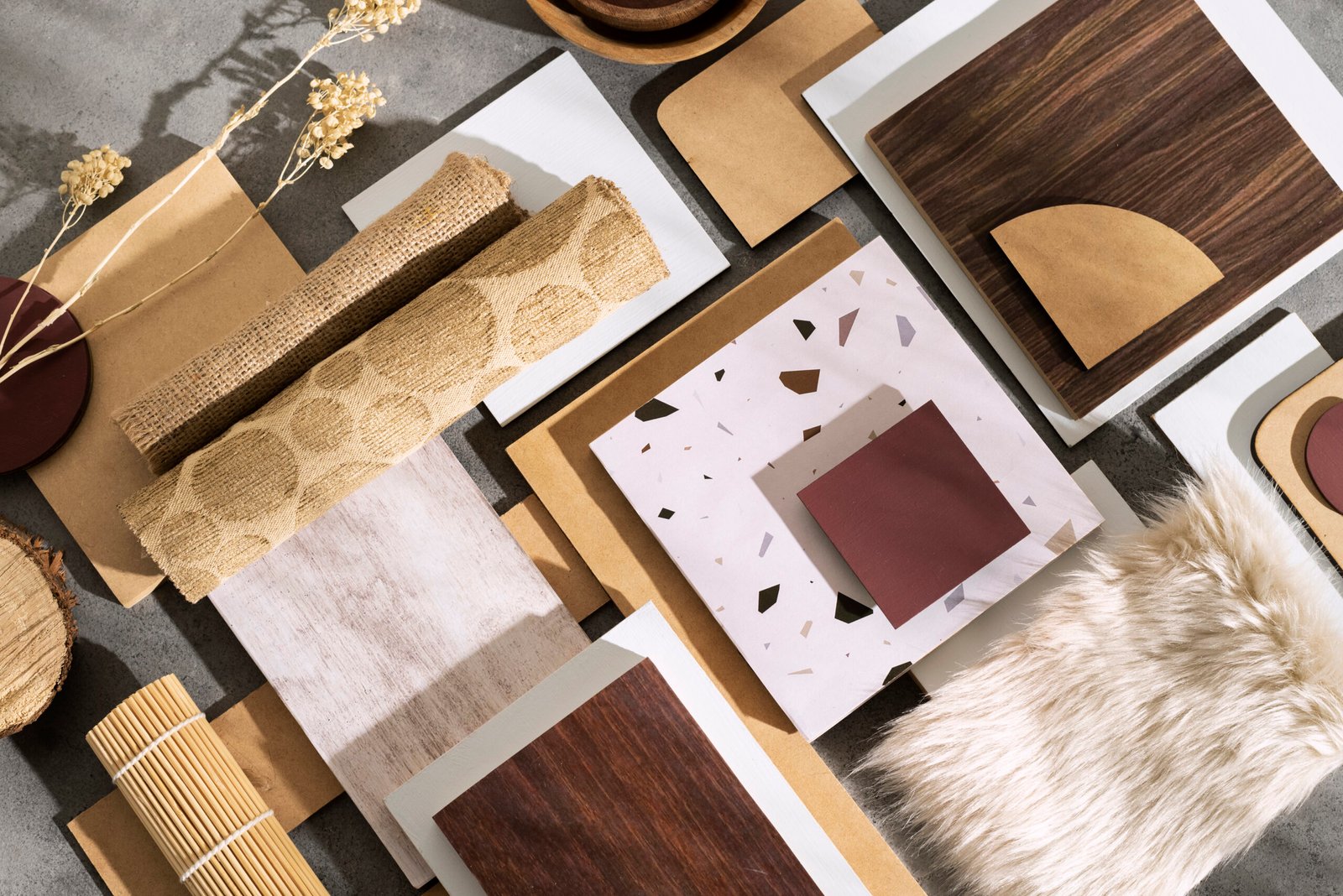In the evolving world of home decor, choosing the right Interior Design Materials is crucial for creating stylish, functional, and sustainable spaces. As we step into 2025, a new wave of materials is dominating the design landscape—blending natural aesthetics, eco-conscious choices, and cutting-edge innovation. Whether you’re remodeling a room or planning a new build, understanding the top materials can help you make informed and trend-forward decisions.
2025 Most Coveted Interior Design Materials—And Where to Use Them
Why Material Selection Matters in Interior Design
Interior Design Materials serve as the foundation for every element in your home—from flooring and wall treatments to countertops and furnishings. Beyond aesthetics, these materials influence durability, comfort, maintenance, and even environmental impact. By staying updated on emerging trends, homeowners and designers can craft interiors that are both timeless and future-ready.
1. Sustainable Wood: The Timeless Eco-Favorite
Sustainable wood remains at the forefront of Interior Design Materials in 2025. Responsibly sourced hardwoods like oak, walnut, and bamboo not only reduce environmental impact but also bring warmth and texture into the home. They’re widely used in flooring, cabinetry, and accent walls.
Reclaimed wood is another favorite, adding rustic charm to modern and traditional spaces alike.
2. Natural Stone: Elegance and Longevity
From marble countertops to slate flooring, natural stones continue to be among the most desirable Interior Design Materials. Their durability and luxury appeal make them ideal for kitchens, bathrooms, and entryways. In 2025, textured stones like travertine and soapstone are gaining popularity for their soft, matte finishes.
Using stone in your feature wall or fireplace surround can create a dramatic focal point while offering longevity and value.
3. Terrazzo: A Modern Comeback
Originally popular in mid-century design, terrazzo is making a strong return in 2025. Composed of chips of marble, quartz, or glass in a cement or resin base, it’s now being used in bathroom vanities, backsplashes, and flooring.
Its customizable color schemes and eco-friendly options make it one of the most versatile Interior Design Materials for modern homes.
Also, explore Master Blogging with Expert Tips from MistyInfo.com
4. Concrete: Industrial Meets Chic
Once limited to garages and basements, concrete is now a staple in minimalist and industrial-style homes. Polished concrete floors, concrete countertops, and wall panels are valued for their sleek, urban feel.
Additionally, microcement is emerging as a more flexible, lightweight version—perfect for vertical surfaces or smaller spaces.
5. Biophilic Materials: Bringing Nature Indoors
In 2025, Interior Design Materials that align with the biophilic trend—bringing the outdoors in—are gaining traction. Think cork, rattan, and clay-based plaster. These materials not only promote natural aesthetics but also improve indoor air quality and promote mental well-being.
Used in light fixtures, accent furniture, and decorative finishes, they harmonize with other design elements while emphasizing sustainability.
6. High-Performance Fabrics
Today’s homeowners demand comfort without compromising on style. Enter high-performance textiles: stain-resistant, UV-protected, and antimicrobial. These materials are perfect for upholstery, window treatments, and outdoor furniture.
Blending innovation and practicality, they have become essential Interior Design Materials in family-friendly and pet-friendly homes.
7. Glass and Metal Combinations
The fusion of glass and metal elements is a growing trend in 2025. Used in partition walls, cabinet doors, and custom furniture, these materials reflect light and create a sense of openness.
Brushed brass, matte black steel, and bronze finishes are particularly in demand, offering sophistication and durability in both modern and transitional spaces.
FAQs About Interior Design Materials
Q1: What are the most durable interior design materials?
Natural stone, concrete, and sustainable hardwoods are among the most durable, offering long-term resilience and aesthetic value.
Q2: Are eco-friendly materials more expensive?
While some sustainable materials may have a higher upfront cost, they often offer better longevity and lower maintenance, making them cost-effective over time.
Q3: How do I mix different interior design materials?
Focus on contrast and balance. For example, pair warm wood tones with cool concrete, or mix smooth glass with textured stone for visual interest.
Q4: What materials are best for high-traffic areas?
Consider using terrazzo, concrete, or engineered wood in areas like entryways and kitchens due to their strength and easy maintenance.
Q5: What’s trending in wall treatments for 2025?
Natural stone feature walls, cork paneling, and decorative plasters are trending for their texture, sustainability, and design appeal.
Conclusion
As homeowners seek design solutions that combine beauty, function, and sustainability, the choice of Interior Design Materials becomes increasingly important. From classic natural wood to contemporary terrazzo and innovative microcement, the materials of 2025 reflect a shift toward more meaningful and mindful living spaces.
Embrace these trends to craft interiors that not only look stunning but also stand the test of time—whether it’s a sleek kitchen countertop, a cozy feature wall, or a natural-textured floor. With the right Interior Design Materials, your home can be as enduring as it is elegant.



